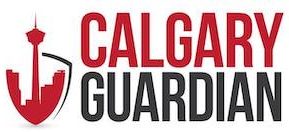Debt can creep up on you quietly; it might be one emergency loan, credit card swipe, or one missed payment at a time. Before you know it, the balance piles up, interest grows, and your financial stability becomes shaky.

The good news is you do not necessarily need to wait until things spiral out of control before taking action. Whether you’re dealing with credit card debt, student loans, or unexpected expenses, here are several proactive steps to regain control of your finances.
Figure Out What You Owe
The first step to managing debt is knowing exactly how much you owe. List all your debts, including credit cards, loans, interest rates, and minimum payments. Organize them in one place to better understand your financial situation.
This helps you figure out which debts to tackle first and avoids surprises. By understanding your total debt load, you can create a practical and effective repayment plan. This allows you to decide on the debt relief option that fits your situation.
Create and Stick to a Budget
Another important step to handling your debt is to create a budget and stick to it. Start by tracking your income and expenses to identify your spending patterns. Then, allocate funds for essentials, repayments, and savings.
Cut back on non-essentials to free up money for servicing your debt. A well-planned budget keeps you focused, prevents overspending, and ensures every dollar is working toward reducing your debt.
Determine What You Can Afford to Pay
To tackle debt effectively, determine what you can realistically afford to pay each month. After covering essentials like food, housing, food, and utilities, assess how much remains for debt repayment. Avoid overcommitting, since paying too much can lead to new debt. Knowing your limits helps you stay consistent, avoid burnout, and make steady progress toward becoming debt-free without affecting your daily needs.
Prioritize Your Debts
By prioritizing your debt, you can focus on what matters most. Start by listing all debts and identifying those with the highest interest rates, which are usually credit cards. Paying them off saves money over time. Alternatively, use the debt snowball method by tackling the smallest balances for quick wins. No matter the strategy you choose, clear priorities keep you organized, motivated, and moving forward toward financial freedom.
Consolidate Your Debt
Consolidating your debt involves combining multiple balances into one loan or payment, and often results in a lower interest rate. This simplifies your finances, reduces the number of due dates, and may lower your monthly payments. Options include personal loans and balance transfer credit cards. If done properly, debt consolidation makes repayment more manageable and helps you stay on track.
Start Small and Improve Later
When dealing with debt, you can build momentum by starting small. Begin with more manageable goals, such as paying a little extra on your smallest debt or cutting one expense. Small wins can greatly boost your confidence. As your finances improve, you can increase payments or tackle larger debts. While progress may feel slow at first, consistent efforts can compound, helping you manage your finances more effectively.
If you’ve noticed yourself slipping further into debt, you must take control of the situation immediately. This involves determining what you owe, creating a budget, and deciding what you can afford to pay. You can also prioritize your debt, consolidate it, and start small before pushing for improvements.
